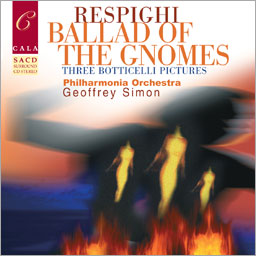Studio Master | FLACs - 24bit 88.2kHz stereo, Covers | 1.31GB
Classical | Label: Zig Zag Territoires | Catalog Number: ZZT 310
RAR 3% Rec.
Classical | Label: Zig Zag Territoires | Catalog Number: ZZT 310
RAR 3% Rec.
outhere-music
Concerto for Violin and Organ in C Major, RV 808
01 - I. Allegro
02 - II. Largo
03 - III. Allegro
Concerto for Cello in A Minor, RV 420
04 - I. Andante
05 - II. Adagio
06 - III. Allegro
Concerto for Traverso in E Minor, RV 431
07 - I. Allegro
08 - II. Andante
09 - III. Allegro
Concerto for Violin in C Major, RV 194
10 - I. Allegro mà poco
11 - II. Largo
12 - III. Allegro
Concerto for Traverso in A Minor, RV 440
13 - I. Allegro non molto
14 - II. Larghetto
15 - III. Allegro
Concerto for Cello in D Major, RV 403
16 - I. Allegro
17 - II. Andante e spiritoso
18 - III. Allegro
Concerto for Violin in D Minor, RV 235
19 - I. Allegro non molto
20 - II. Adagio
21 - III. Allegro
Concerto for Violin and Organ in G Minor, After RV 517
22 - I. Allegro
23 - II. Andante
24 - III. Allegro
'Effervescence, humour, lyricism, explosion, concentration, contemplation, impatience, energy... The list could go on forever. Words escape me when trying to determine what fascinates in Antonio Vivaldi's music. This disc represents our particular homage to this ever so generous composer, who gratifies musicians by putting into their hands fabulous tools of diversity, emotion and effectiveness.' Amandine Beyer
The performance is lively, technically just about perfect. The selection of pieces showcases a side of Vivaldi that reminds one of Schmelzer.
01 - I. Allegro
02 - II. Largo
03 - III. Allegro
Concerto for Cello in A Minor, RV 420
04 - I. Andante
05 - II. Adagio
06 - III. Allegro
Concerto for Traverso in E Minor, RV 431
07 - I. Allegro
08 - II. Andante
09 - III. Allegro
Concerto for Violin in C Major, RV 194
10 - I. Allegro mà poco
11 - II. Largo
12 - III. Allegro
Concerto for Traverso in A Minor, RV 440
13 - I. Allegro non molto
14 - II. Larghetto
15 - III. Allegro
Concerto for Cello in D Major, RV 403
16 - I. Allegro
17 - II. Andante e spiritoso
18 - III. Allegro
Concerto for Violin in D Minor, RV 235
19 - I. Allegro non molto
20 - II. Adagio
21 - III. Allegro
Concerto for Violin and Organ in G Minor, After RV 517
22 - I. Allegro
23 - II. Andante
24 - III. Allegro
Amandine Beyer (solo violin, direction)
Manuel Granatiero (traverso)
Alba Roca (violin)
Flavio Losco violin) (RV 194, RV 235, RV 517, RV880)
Marta Páramo (viola)
Marco Ceccato (solo cello)
Rebeca Ferri (cello) (RV 403, RV 420)
Baldomero Barciela (violone)
María Crisol (bassoon) (RV 431, RV 440)
Francesco Romano (theorbo, Baroque guitar)
Anna Fontana (solo organ, harpsichord)
password: zigzag

















 Sonics:
Sonics:



























